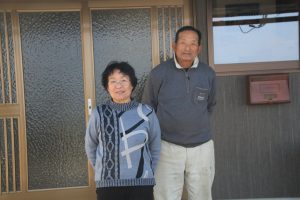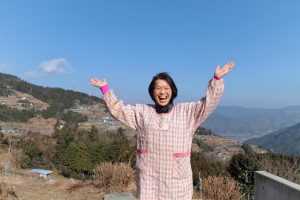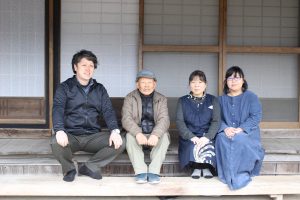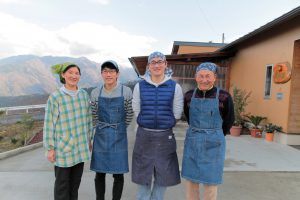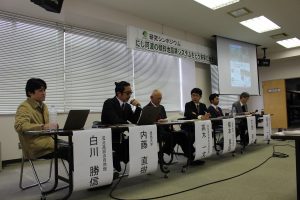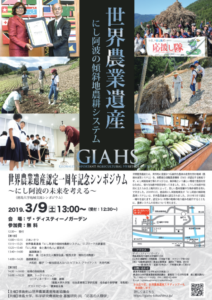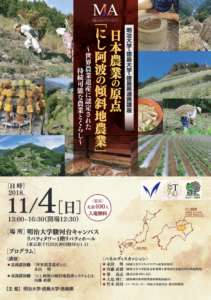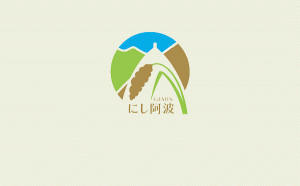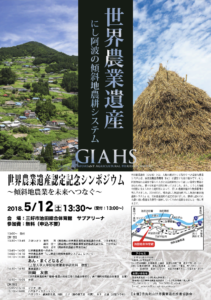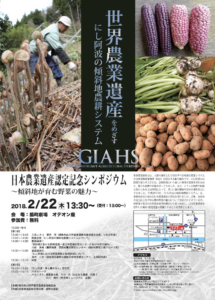Chiyoko Yamamoto and Yasuo Koizumi|The People Supporting Globally Important Agricultural Heritage System
Chiyoko Yamamoto and Yasuo Koizumi (Anabuki Town in Mima City / Farmer's Guest House Yamamotoya) We arrived at Fuchimyou after driving about 40 minutes from the Wakimachi InterChange. Although this village is mountainous, the slope is gentler in many places than in other areas. The farmer's guest house, "Yamamotoya," is run by an energetic mother. She is Mr. Koizumi's younger sister and the head of this area's community association. She returned to Mima from Osaka, where she had lived for many years, and started a second life in the family home where she was born and raised. She said, "Children who come to experience farming say that the vegetables grown […]
Yoko Ando|The People Supporting Globally Important Agricultural Heritage System
Yoko Ando (Higashi-Miyoshi Town / Guest House Ando) "Guest House Ando (also known as Anchan's house)" is located 460 meters above sea level in Higashi-Miyoshi Town and has welcomed many guests from Japan and abroad in response to the call for hands-on educational tours and tourism projects conducted by "General Incorporated Association Sora no Sato." From Japanese urban junior high school and high school students to international exchange, children and adults from Cambodia, Malaysia, Korea, Taiwan, and other countries can come here. They experience seasonal farm work and taste local cuisine with lots of vegetables from here. "When I show them around by car, at first, everyone is surprised to […]
Shinsuke Nakayama, Mari Nakayama, Kumiko Hiura, and Haruyoshi Moriwaki|The People Supporting Globally Important Agricultural Heritage System
Shinsuke Nakayama, Mari Nakayama, Kumiko Hiura and Haruyoshi Moriwaki (Higashi-Iya in Miyoshi City / Guest house Kouya) Here is Higashi-iya-kubo in Miyoshi city. It is a two-and-a-half-hour drive from Tokushima city. A young couple has started their own guest house, and it is no exaggeration to say that this is an unexplored region even though the roads are maintained. This is the house where Mari-san's father was born and raised. Her mother, Kumiko-san, wanted to keep the house but thought that "it would be too much for me to live there...." Then, her daughter and her husband decided to move in here. Mr. and Mrs. Nakayama said, "We had planned […]
Ootake Hajime|The People Supporting Globally Important Agricultural Heritage System
Ootake Hajime (Anabuki Town in Mima City / Farmer’s restaurant Fuwari) Mr. Hajime Ootake (rightmost in the photo) said, "I would like to recommend living in the countryside," with a smile. In March 2016, upon retirement, he and his family moved from Tokyo to Fuchimyou village, where his wife's hometown is located. He now runs a farmer's restaurant called "Fuwari" with his wife and sons. Fuchimyou village is located around 250 to 550 meters above sea level in Anabuki and is close to the mountaintop where steep slope land agriculture is carried out. Mr.Yasuo Koizumi has been a farmer for many years and is wondering about the future of his […]
Katsuyuki Isogai and Hamako Isogai|The People Supporting Globally Important Agricultural Heritage System
Katsuyuki Isogai and Hamako Isogai (Tsurugi Town) Isogai family's house is about 400 meters above sea level in the village of Mikidochi. Their surname, "Isogai," reminds me that the sea is strange because they have a house on a mountain, but Hamako said, "Our ancestors migrated from the Miura Peninsula in Kanagawa Prefecture." Looking through the old records, we can see that their ancestors migrated to this area more than 400 years ago. Katsuyuki said, "They were the first people to enter this village, so our business name is "Omoya." My great-grandfather collected the land tax around this area and went to Wakimachi with his sword to pay it in." […]
“How to pass the Nishi-Awa Steep-Slope Land Agriculture System to the future generations?”
On March 28, 2019, Western Region Agricultural Research Center, National Agriculture and Food Research Organization (NARO), hosted a symposium called “How to pass the Nishi-Awa Steep-Slope Land Agriculture System to the future generations?” In the first part of the symposium, Professor Katsunobu Shirakawa (Geihoku Kogen no Shizenkan) presented a seminar on an innovative initiative for the Hiroshima town, Hiroshima Prefecture. The initiative was proposed to boost the local economy by exchanging wood for local currency. Associate Professor Naito presented an overview of the Nishi-Awa steep-slope agricultural system. Mr. Kazufumi Takagi spoke about the diverse indigenous crops grown in this region, and Professor Yoshinobu Kusumoto discussed the differences between the Traditional […]
The 1st anniversary of the designation of Nishi-Awa as a Globally Important Agricultural Heritage System (GIAHS) site
It’s been 1 year since the Food and Agriculture Organization designated the Nishi-Awa steep-slope agricultural system” as a Globally Important Agricultural Heritage System (GIAHS) site. The symposium was organized to celebrate the first anniversary of this event. Professors Hiromu Shimizu and Junko Owada were the keynote speakers at the event. At the “Nishi-Awa Nou to Shoku no Meijin” certification ceremony, eight people were certified by Tokushima Prefecture. In addition, nine people, including elementary and high school students and members of the agricultural groups from the Nishi-Awa region, provided presentations regarding their activities over the past year since the designation. The symposium was an occasion to connect with the local people […]
Origin of Japanese agriculture: The Nishi-Awa steep-slope land agriculture system
On November 4, 2018, a symposium on one of the Globally Important Agricultural heritage System (GIAHS) sites, the Nishi-Awa steep-slope land agriculture system, was held at the Meiji University. Title: Origin of Japanese agriculture: The Nishi-Awa steep-slope land agriculture system Date: November 4, 2018 Venue: Liberty tower, Surugadai Campus, Meiji University Sponsor: Meiji University, Tokushima University, Tokushima Prefecture Program <Lectures>Keynote speech 1: What is Globally Important Agricultural Heritage System (GIAHS)? By Mr. Akira Nagata (UNU-IAS) Keynote speech 2 : What is the Nishi-Awa Steep-Slope Land Agriculture System? By Professor Naoki Naito (Tokushima University) <Panel discussion>Coordinator: Professor Tamotsu Takemoto (Vice-president and Professor, School of Agriculture, Meiji University) Panelists: Mr. Nagata(UNU-IAS), Pro. […]
The 5th ERAHS in MINABE
Globally Important Agricultural Heritage Systems (GIAHS) and sustainable societies Date : August 26(SUN) - 29(WED), 2018Venue:Hotel & Resorts WAKAYAMA-MINABE 348 Yamauchi, Minabe, Hidaka-gun, Wakayama, Japan
A Symposium Commemorating the Nishi-Awa Steep Slope Land Agriculture System Designation as a GIAHS site
The Symposium was held on May 12, 2018, to commemorate the recognition of the Nishi-Awa region as a GIAHS site, with approximately 130 residents and others in attendance. We invited Pro. Anne MCDONALD (Graduate School of Global Environmental Studies, Sophia University), a member of the Scientific Advisory Group (SAG) for GIAHS, and Mr. Tasaki Tomonori from Takachihogo Shiibayama, which was designated as a GIAHS site in 2015, as lecturers for the symposium. Pro. Anne spoke from his perspective on the history of GIAHS, his experiences at other sites, and the advantages and challenges of the Nishi-Awa region of Tokushima Prefecture, which he visited in November 2017. A panel discussion was […]
Symposium for the Recognition of Japanese Nationally Important Agriculture Heritage System: Thinking through vegetables grown in sloping areas
The “Nishi-Awa steep slope agricultural system” in Japan was recognized as an agricultural heritage site, in March 2017. A symposium was held on February 22, 2018, which was attended by approximately 100 local people. Hiroki Kawashima, who has long been conducting research on sloping-land vegetable cultivation in the Tsurugi Mountains, delivered a lecture on his research. Kazufumi Takagi delivered a lecture on different types of vegetables, wild plants, and medicinal herbs grown in the Nishi-Awa region. His lecture ranged from cultivation techniques to marketing and cooking. After the conclusion of lectures, the “Nishi-Awa Nou to Shoku no Meijin” (food and agriculture experts in Nishi Awa) certification ceremony, hosted by Tokushima […]

